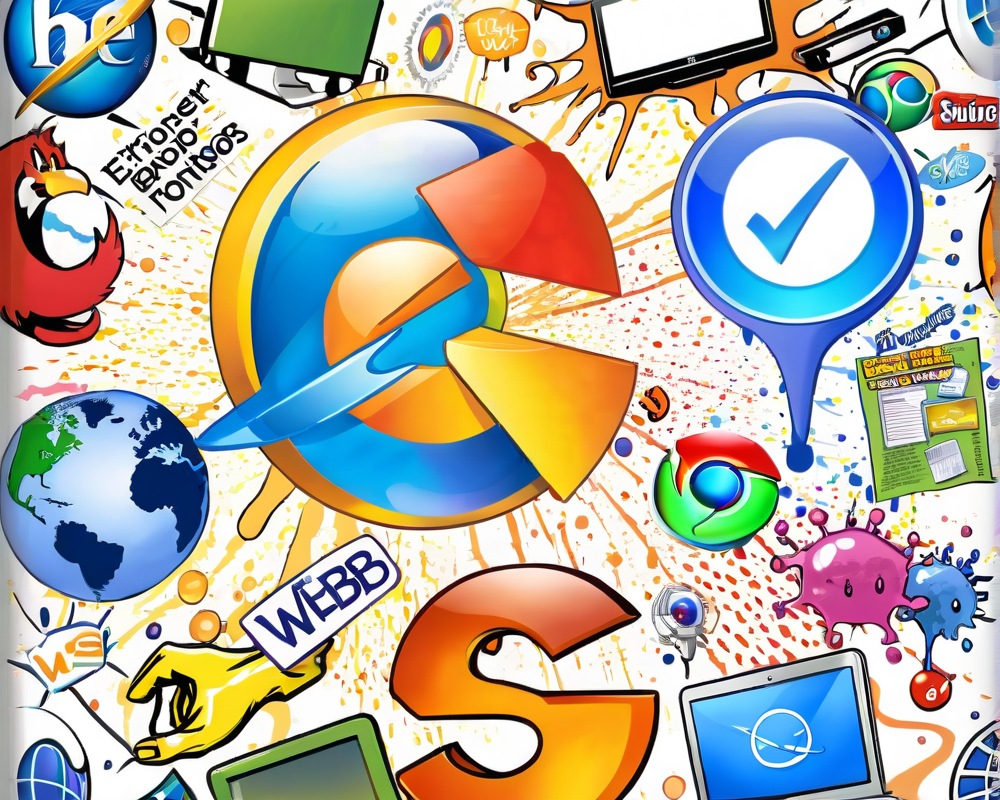The Iconic Battle for Browsing Dominance
Ah, the good old days when the clicking of a mouse was accompanied by a little icon flaunting, “This site has been optimized for Internet Explorer!” Who knew that the battle for our hearts—and quite literally, our clicks—would spark a legendary showdown? Just like the current tussle between the big W’s of Web 2.0 monopolies and the quaint communities of Web 3.0, the early days of the internet were rife with competition. Think of it as a historical reenactment, but instead of knights in shining armor, we had browsers in blue and green.
Netscape vs. Microsoft: A Clash of Titans
Before Facebook was a thing, Netscape Navigator was the reigning champion of surfing the World Wide Web. The first consumer browser was more than just a fancy tool; it was the iconic vehicle for the dawn of the internet age. However, Microsoft wasn’t content to sit back and watch while Netscape rode the waves. Enter Internet Explorer, their closed-source browser that, thanks to an innovative bundling strategy with Windows, hijacked the browsing experience quicker than you can say “monopoly!”
Netscape Strikes Back
In a dramatic twist of fate, Netscape threw caution to the wind and open-sourced its browser in 1998, paving the way for Mozilla and Firefox. It was like a phoenix rising from the ashes of corporate tyranny. Firefox, nicknamed “Phoenix” during development, emerged as a champion of open-source principles, giving users a breath of fresh air (and a better browsing experience).
A New Era: The Emergence of Web 3.0
Fast forward to today, and the internet landscape has undergone a major transformation. We have entered the realm of Web 3.0—a brave new world where decentralized autonomous organizations (DAOs) and digital wallets are the new keys to the kingdom. Much like your beloved 1990s browser, these wallets serve as vital gateways to community-driven applications. But wait—didn’t we learn anything from history?
The Echoes of Monopoly
Just as Internet Explorer became synonymous with closed systems and exclusivity, we find ourselves grappling with modern monopolies, particularly in the realm of digital wallets like MetaMask. With its meteoric rise to over 21 million monthly active users, MetaMask has cast an ominous shadow over the decentralization that Web 3.0 promised.
Choosing a Different Path: User Empowerment
History has a funny way of repeating itself, but this time, users are not just passive spectators. They have a voice—a powerful one at that. Unlike the Internet Explorer days, where choices felt utterly limited, users now wield the ability to shape the future of applications, demanding transparency, control, and ownership over the software that holds their digital assets.
The Rise of Open-Source Alternatives
With Web 3.0 giving users the ability to fork existing projects and create community-driven solutions, monopolistic practices might just be swimming against a strong current. Much of this innovation stems from the need to redefine what it means to engage with technology. Those who remember the clutches of Internet Explorer can only hope this renewed sense of empowerment leads to better alternatives.
Looking Ahead: Expectations of a New Generation
As more people dive into the world of Web 3.0, they will come to expect their handling of digital assets to be as open and flexible as the platforms they engage with. No more walled gardens, please. The users want ownership and choice, just like they wanted a speedy browser in the 90s—even if it meant navigating through a minefield of hideous pop-ups.
It may be too early to declare which project will taste the bitter failure reminiscent of Internet Explorer’s decline, but one thing is certain: Web 3.0 users won’t settle for less than full control over their digital futures. The fight for the soul of the internet continues, with us cheering from the sidelines.




